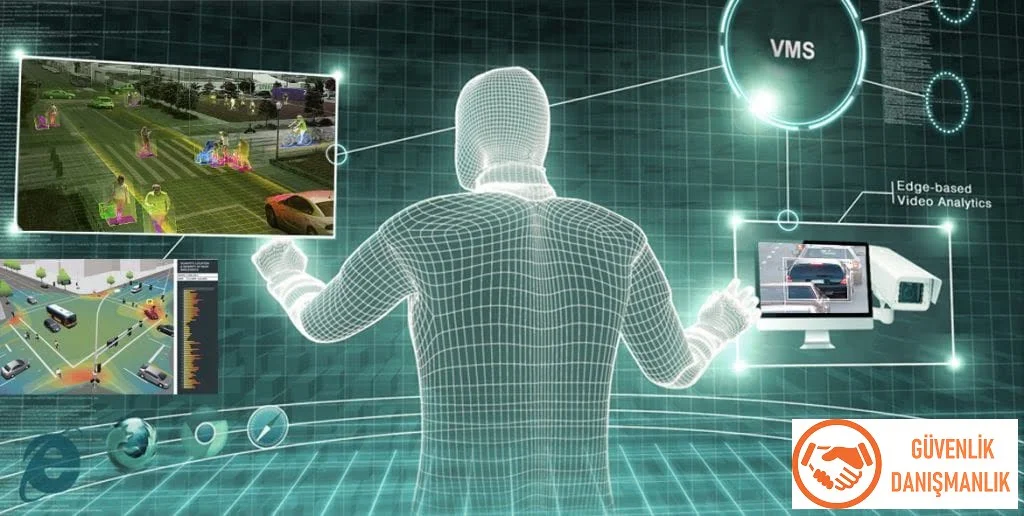Electronic security systems are vital systems for the safety of businesses and homes. Many systems such as fire alarms, burglar alarms, door access control, camera systems, and other security devices make up electronic security systems. It is important for these systems to work effectively for security purposes.
Integration means different systems or devices working together. Electronic security system integration allows different security devices and systems to work together. This integration allows for the creation and control of a more effective security system.
Integration can be achieved by bringing separate systems together and creating a single system. This way, in the event of any problem or incident, all systems work together and act faster. For example, integrating different systems such as fire alarms, burglar alarms, and door access control can facilitate easy access to emergency exits during a fire by deactivating the door access control system when the fire alarm is triggered.
Integration also facilitates monitoring and control processes. As all systems work together, monitoring and control processes can be carried out more effectively. For example, integrating camera systems and door access control systems can enable automatic redirection of the camera system to a point where movement is detected at the door.

Integration also facilitates the management of security systems. A system in which all systems work together makes management and maintenance operations even easier. Security personnel can access all systems through a single system instead of individually controlling each system.
As a result, electronic security system integration is important for creating a more effective security system, facilitating monitoring and control operations, and making management and maintenance operations more efficient.
Integration can also reduce costs. Integration of separately purchased systems provides a less expensive integration by using existing systems rather than buying a more expensive system.
However, electronic security system integration requires careful planning and implementation. During the integration process, a compatible structure should be created between all devices and systems, and each one should be properly configured. Additionally, software and hardware components used in the integration process should be compatible between systems.
The integration process should be regularly monitored and maintained to ensure that security systems are working properly. This allows for early detection and prevention of device and system failures. Additionally, software and firmware updates should be made for each device.

In conclusion, the integration of electronic security systems is important to create a more effective security system, facilitate monitoring and control processes, and make management and maintenance operations more efficient. However, the integration process requires careful planning, implementation, and regular maintenance.
Furthermore, it is important to reduce security vulnerabilities and ensure data security during the integration of electronic security systems. During the integration process, it should be ensured that all devices and systems are properly configured and securely connected. Additionally, all security vulnerabilities should be identified and addressed during the integration process.
Personnel training for the operation and maintenance of all systems during the integration process should also be provided. This ensures that they use the system correctly and maintain the security of their operations. Additionally, appropriate procedures and protocols should be identified and implemented for data sharing and management between systems during the integration process.
The integration of electronic security systems can help an organization better meet its security needs and manage them efficiently. However, the integration process requires careful planning, implementation, and regular maintenance. Security vulnerabilities and data security risks should be reduced, personnel training and appropriate procedures should be provided.

In addition, during the integration of electronic security systems, it is important to properly document and monitor all systems. During the integration process, all features, configurations, connections, and data flow of each system and device should be documented and monitored. This ensures better management of the system, quick detection and resolution of issues.
It is also important to properly test all systems and devices during the integration process. This is necessary to ensure that the systems are working correctly and compatible with each other. During the tests, it should be ensured that each device is properly configured, software and firmware updates are performed, and each complies with the specified standards.
During the integration process, a predetermined integration strategy should be followed. This strategy determines how all systems and devices will be integrated and manages the process. The strategy also determines how to address and resolve any issues encountered during the integration process.
In conclusion, the integration of electronic security systems can help an organization better meet its security needs and manage them more effectively. However, the integration process requires careful planning, implementation, testing, and documentation. It is important to establish the correct integration strategy, ensure compatibility of all systems, and implement all necessary procedures for proper management.
There are several points to be considered during the integration of electronic security systems:
- Needs analysis: Before starting the integration process, a detailed needs analysis should be conducted to determine an integration strategy that fits the organization’s needs. This analysis can be based on the organization’s security needs, existing systems, and configurations.
- Compatible devices: All devices used during the integration process should be compatible with each other. Using different brands or models of devices together can cause compatibility issues and prevent systems from functioning correctly.
- Standards: During the integration process, all systems should comply with appropriate standards. For example, it is important to follow ONVIF (Open Network Video Interface Forum) standards for IP-based camera systems.
- Data flow: The data flow between all integrated systems should be properly configured. This is necessary to ensure that each system is configured correctly and that data flow is properly configured.
- Security: Since the integration of electronic security systems aims to increase the organization’s security, the security of the integrated systems is also important. It is important to ensure that all systems are configured correctly and that appropriate security measures are taken.
- Testing: During the integration process, all systems and devices should be properly tested. This is necessary to ensure that systems are functioning correctly and that they are compatible with each other.
- Documentation: During the integration process, it is important to properly document and monitor all systems. This allows for better management of the system, quick identification and resolution of problems.





